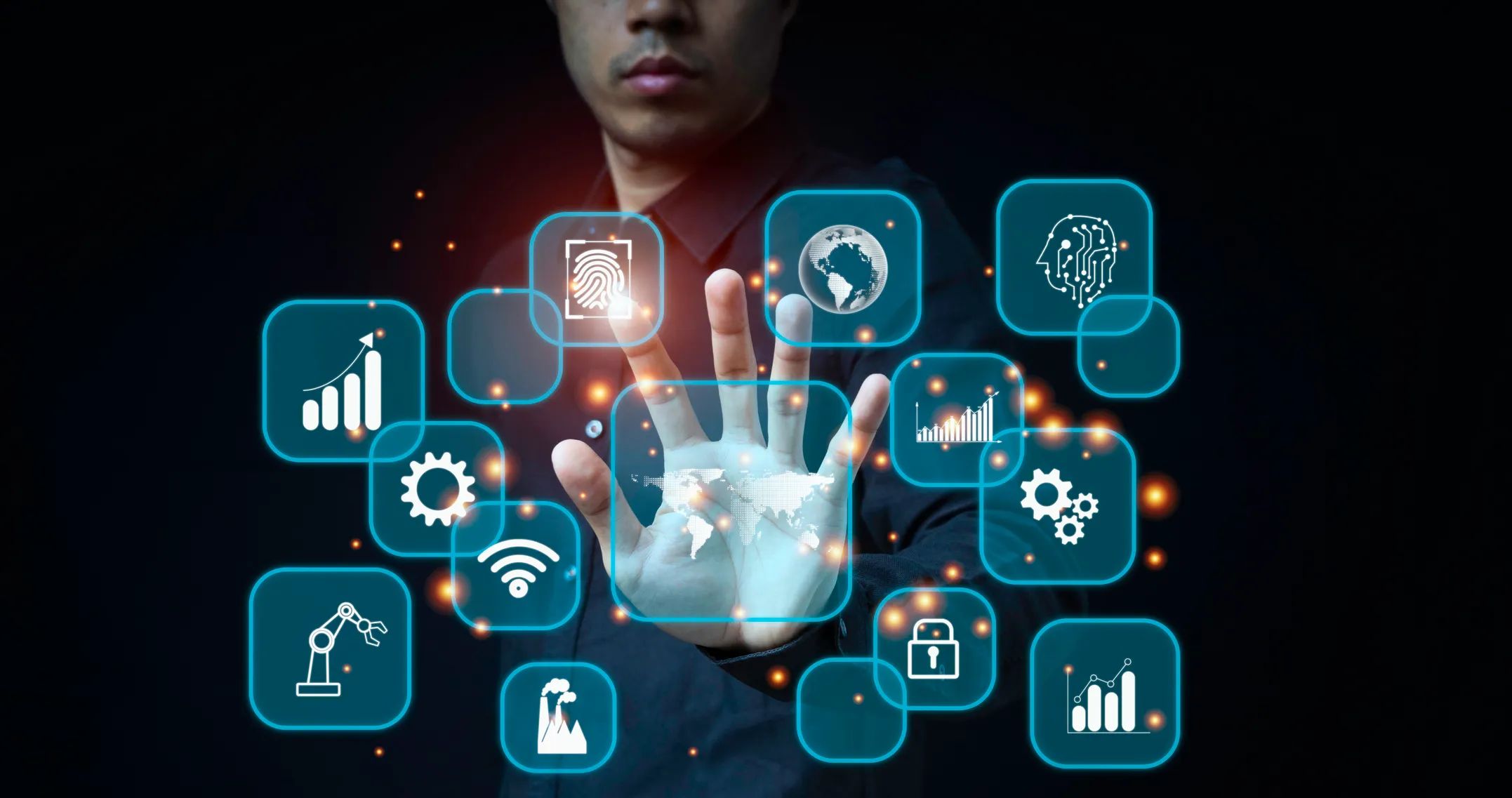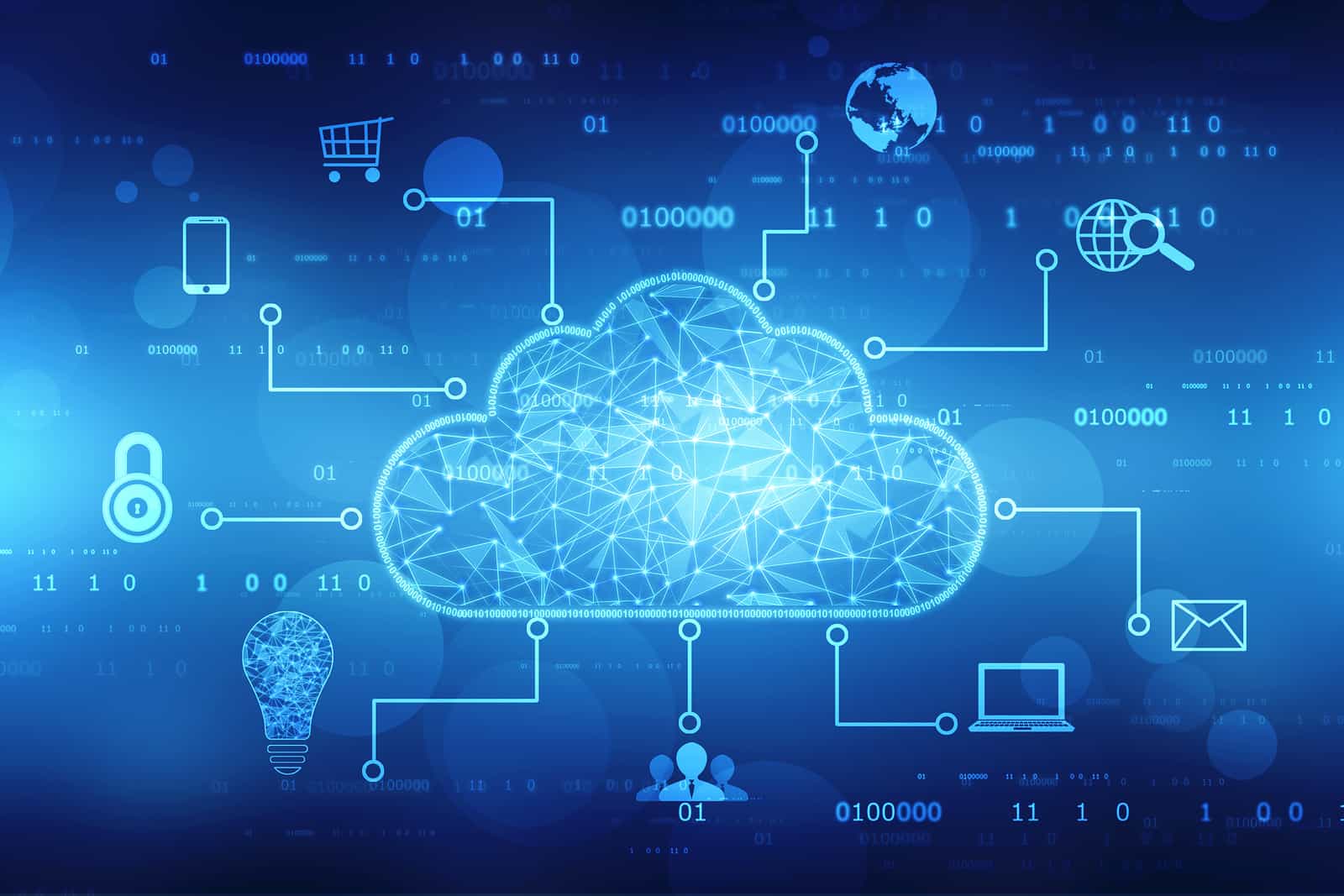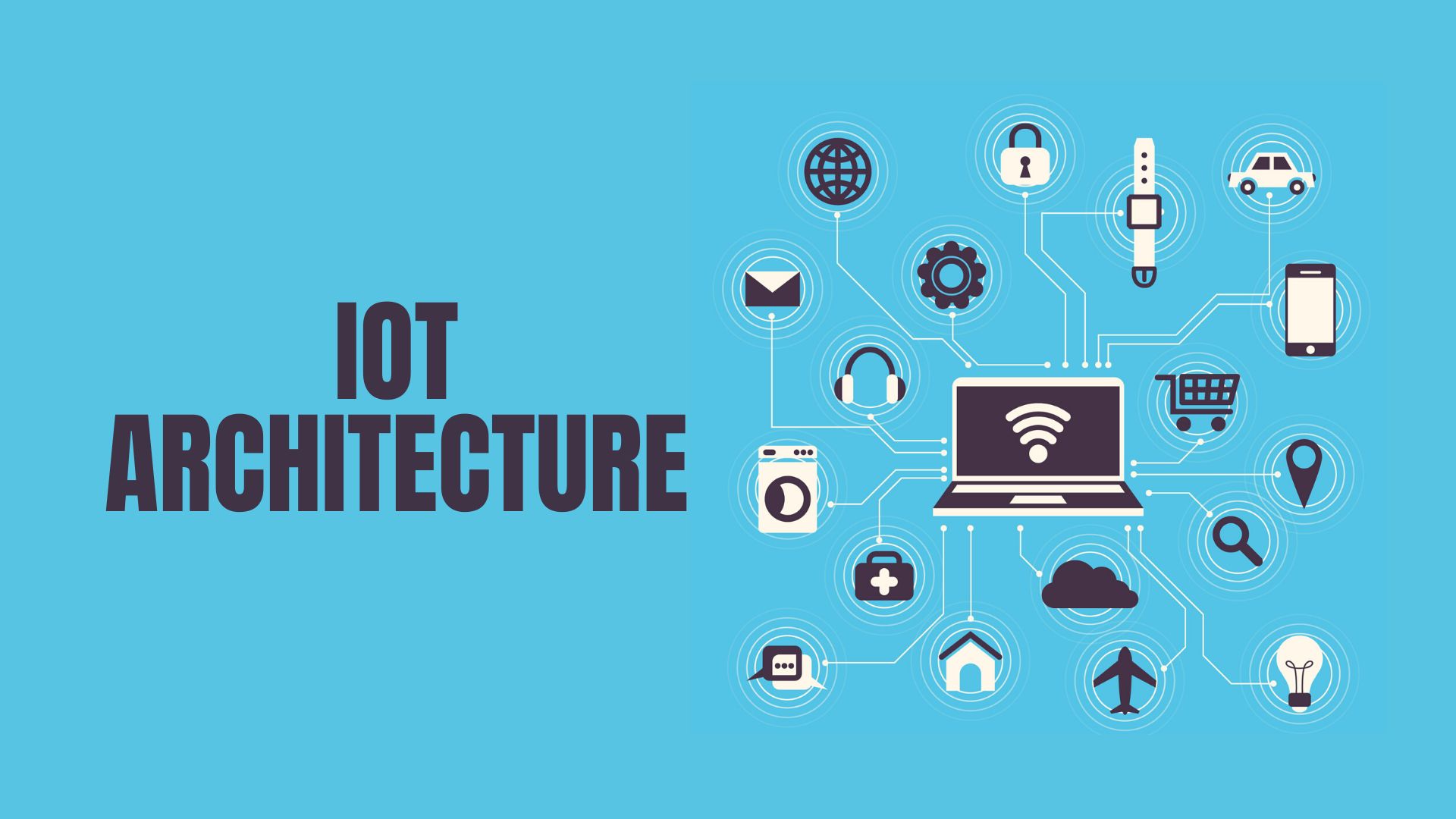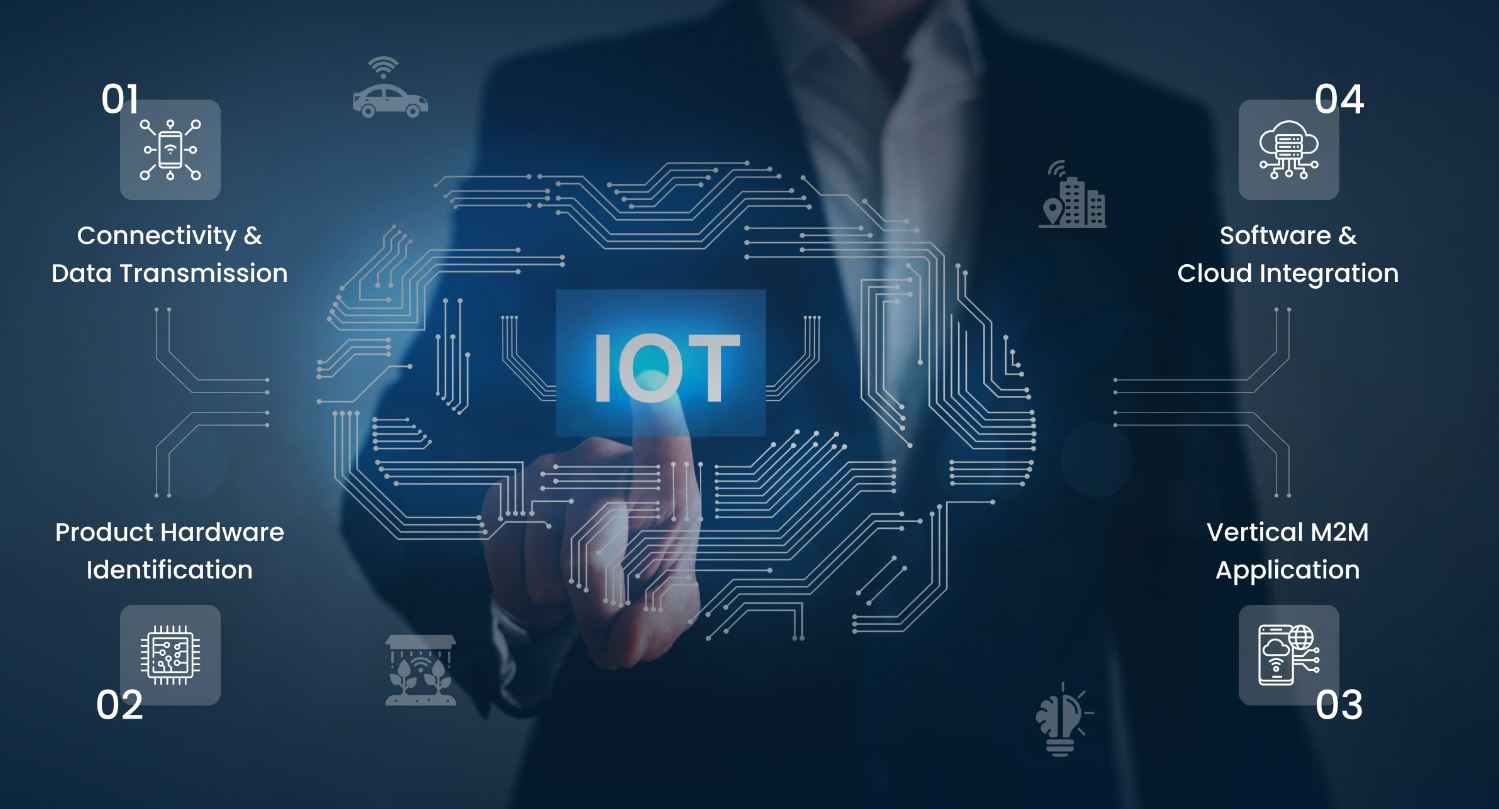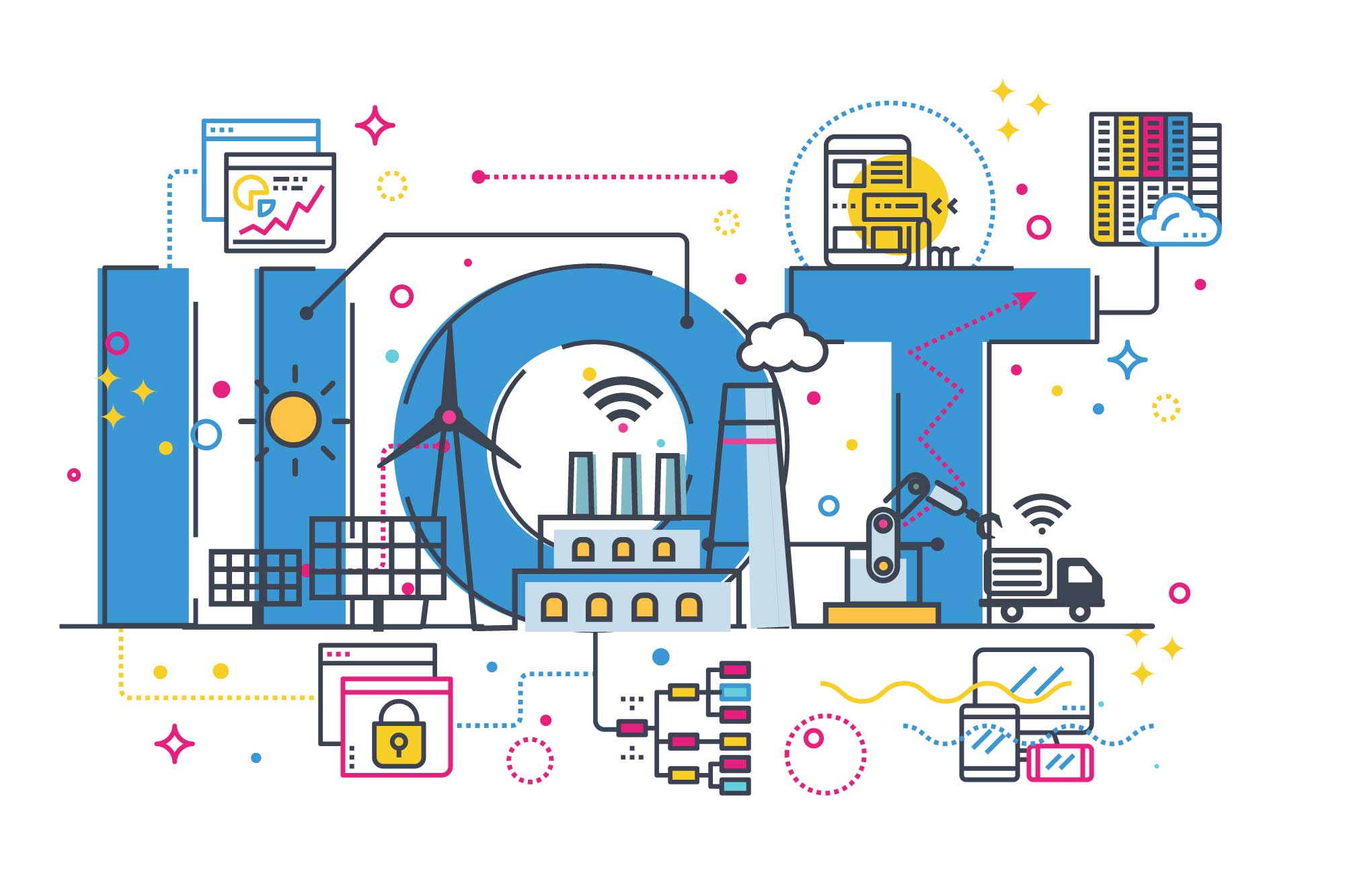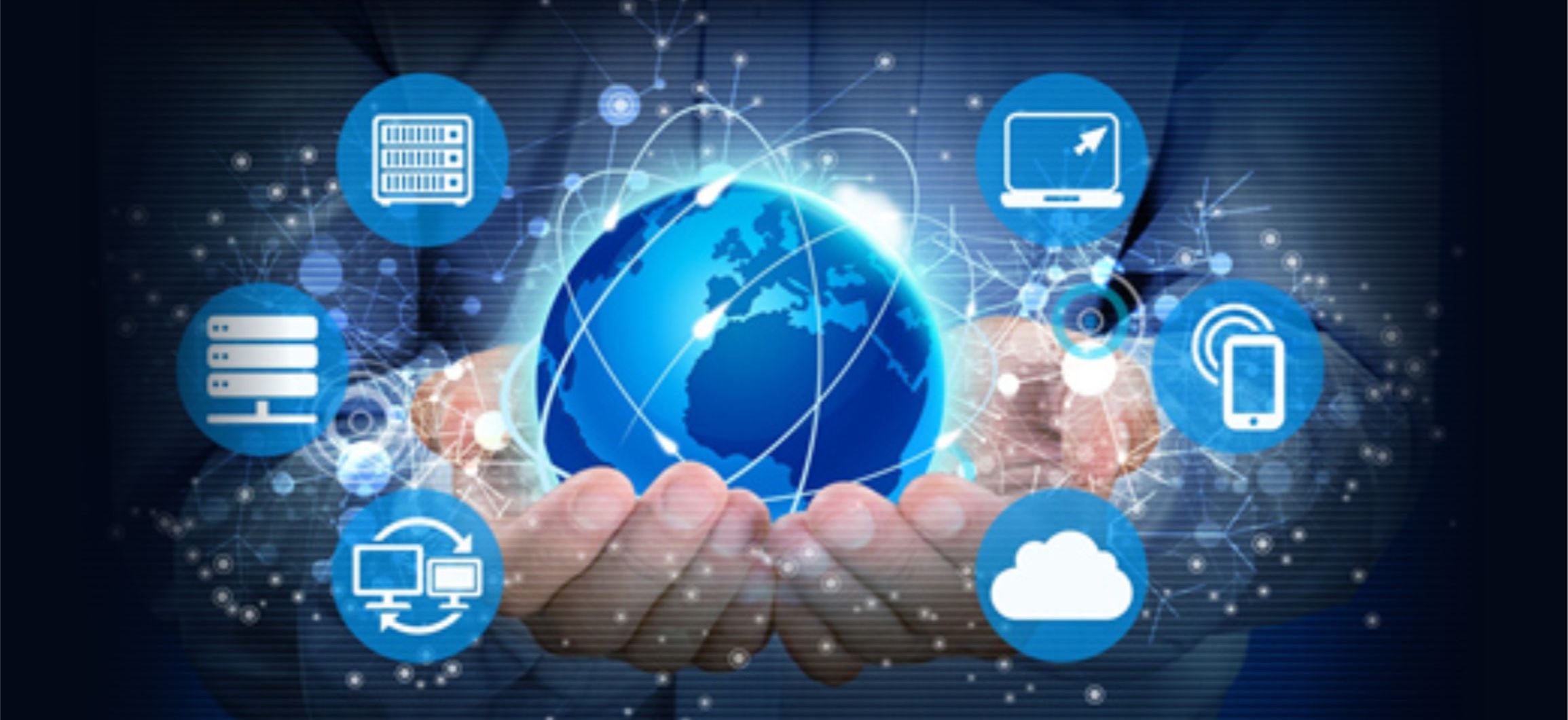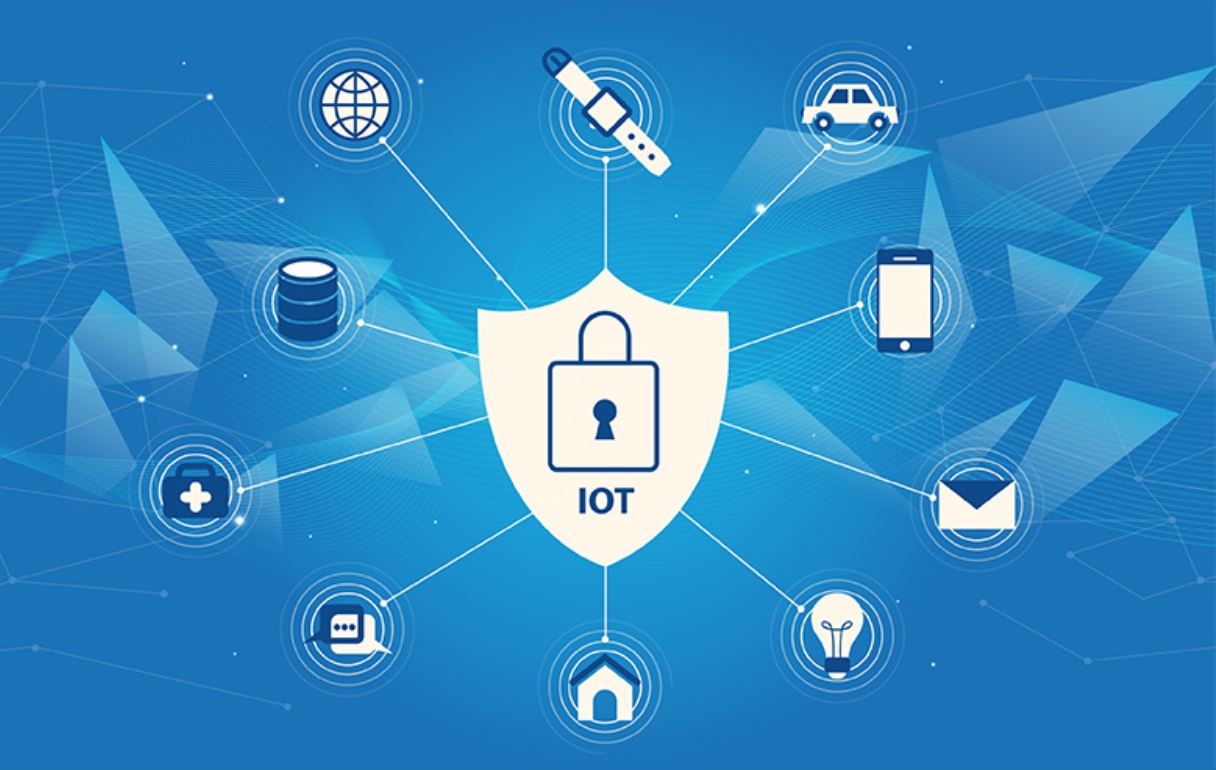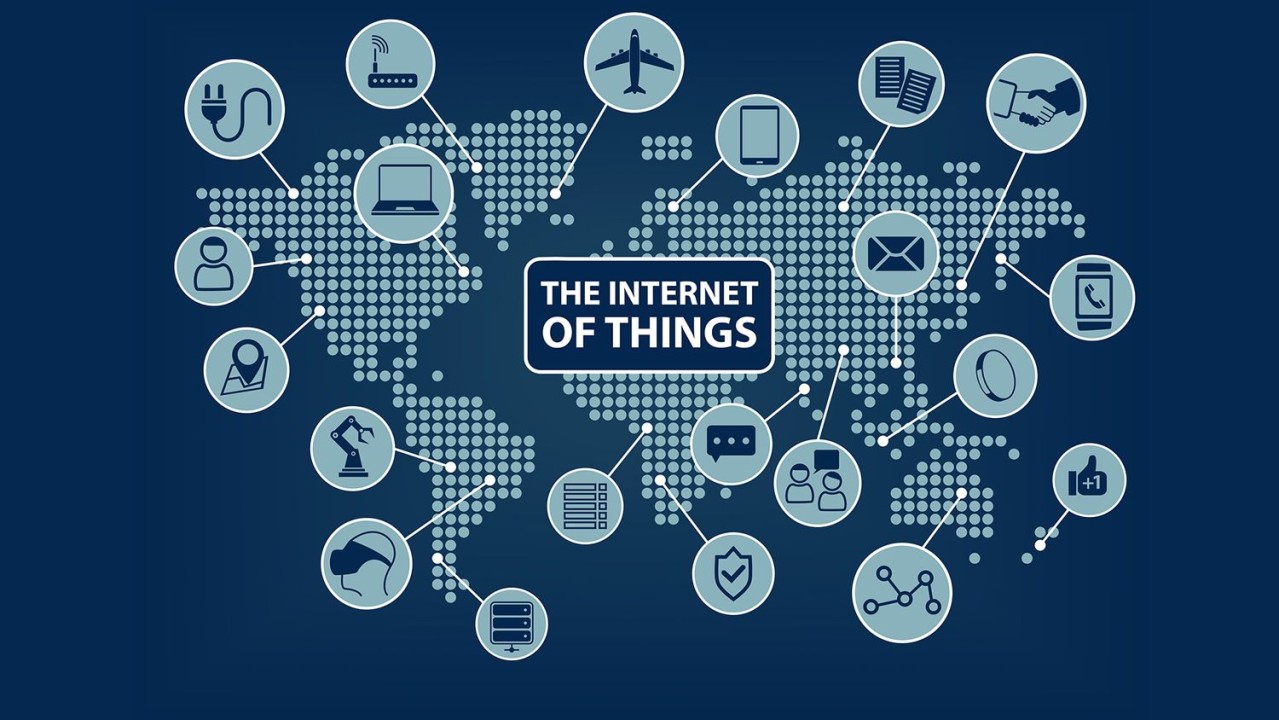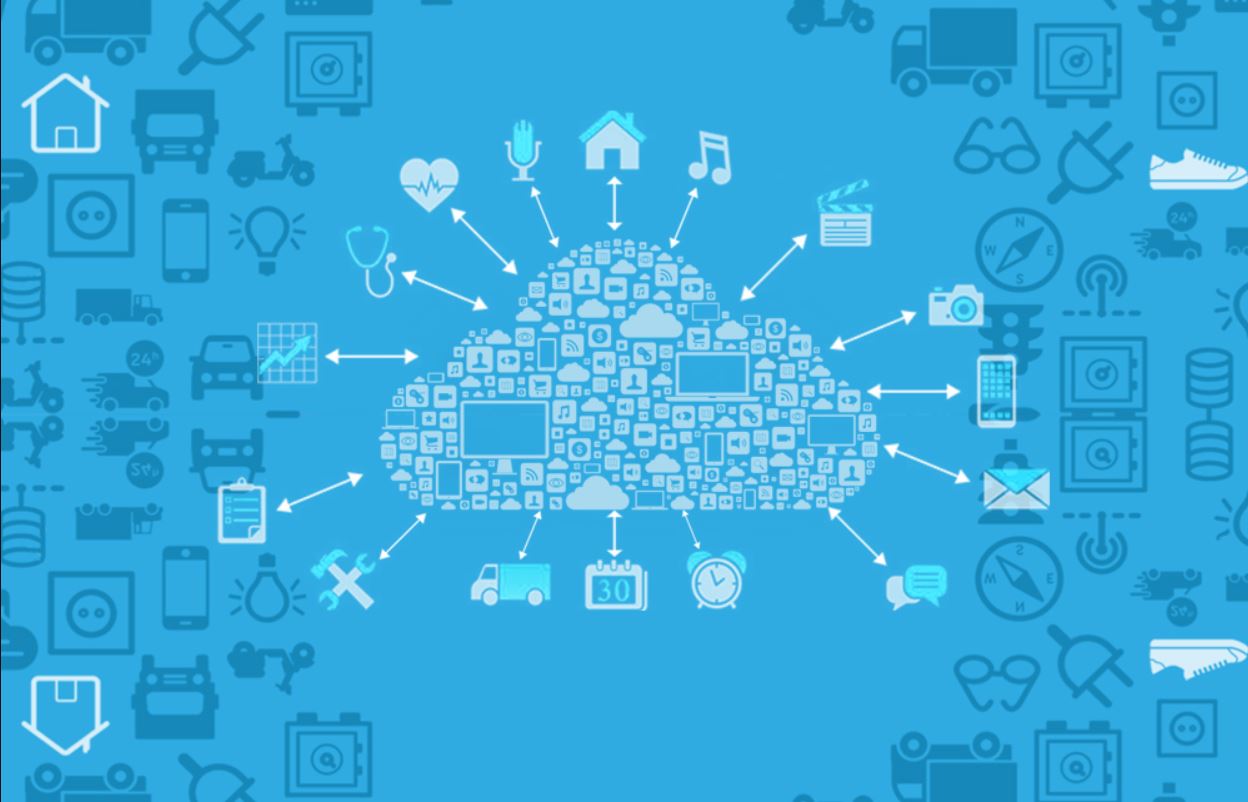Introduction
The Internet of Things (IoT) has revolutionized the way we live and work, connecting everyday objects to the internet and enabling them to collect and exchange data. This massive network of interconnected devices generates an enormous amount of data, which holds valuable insights that can enhance decision-making and drive innovation.
Data analytics is the process of extracting meaningful patterns and trends from large sets of data. By applying advanced analytics techniques to IoT data, businesses can uncover hidden opportunities, optimize operations, and improve overall efficiency.
The combination of IoT and data analytics has given rise to IoT data analytics, a field that focuses on extracting valuable insights from the vast amount of data generated by IoT devices. This field holds immense potential to transform industries and drive growth.
In this article, we will explore what IoT data analytics is, its importance, the challenges it poses, the tools and technologies used, the steps involved in the data analytics process, and some real-world use cases.
What is IoT?
The Internet of Things (IoT) is a network of interconnected physical devices, vehicles, appliances, and other objects that are embedded with sensors, software, and connectivity, enabling them to collect and exchange data over the internet. These devices can range from everyday household objects like thermostats and light bulbs to industrial machinery and infrastructure like smart cities and smart factories.
The main idea behind IoT is to create a seamless and efficient network where devices can communicate and share data with each other without human intervention. This interconnectedness opens up a world of opportunities for automation, optimization, and innovation.
The fundamental components of an IoT system are:
- Devices/Sensors: These are the physical objects or devices that are equipped with sensors and software to collect and transmit data.
- Connectivity: IoT devices use various means of connectivity such as Wi-Fi, Bluetooth, cellular networks, or even satellite connections to transfer data.
- Data Processing: The collected data from IoT devices is sent to a central infrastructure or cloud-based platform where it is stored, processed, and analyzed.
- Applications: IoT data is utilized by applications and systems to generate insights, trigger actions, and provide real-time monitoring and alerts.
IoT technology has permeated numerous sectors, including healthcare, transportation, agriculture, manufacturing, and smart homes. It offers tremendous potential to improve efficiency, enhance decision-making, and create new business models.
What is Data Analytics?
Data analytics is the process of examining large and complex sets of data to uncover valuable insights, patterns, and trends. It involves using various statistical techniques, algorithms, and tools to extract meaning from raw data and make informed decisions.
Data analytics can be divided into three main categories:
- Descriptive Analytics: This type of analytics focuses on understanding what has happened by summarizing past data and providing insights into historical trends and patterns. It helps answer questions like “What happened?” and “What are the key trends?” Examples of descriptive analytics include dashboards and reports.
- Predictive Analytics: Predictive analytics involves using historical data and statistical models to make predictions and forecasts about future outcomes. It helps answer questions like “What is likely to happen?” and “What are the potential scenarios?” Examples include predictive modeling and forecasting algorithms.
- Prescriptive Analytics: Prescriptive analytics goes beyond predicting outcomes by providing recommendations and suggestions on actions to take. It helps answer questions like “What should we do?” and “What is the best course of action?” Examples include optimization models and decision support systems.
Data analytics plays a critical role in organizations of all sizes and industries. It enables businesses to identify opportunities, uncover inefficiencies, optimize processes, mitigate risks, and gain a competitive edge.
The process of data analytics usually involves the following steps:
- Data Collection: This involves gathering and aggregating data from various sources, such as databases, IoT devices, social media, and external sources.
- Data Cleaning: The collected data may contain errors, inconsistencies, or missing values. Data cleaning involves removing or correcting these issues to ensure accuracy and reliability.
- Data Exploration: Exploring the data involves analyzing its characteristics, performing visualizations, and identifying preliminary patterns and trends.
- Data Analysis: This step involves applying statistical techniques, data mining algorithms, or machine learning models to derive insights and uncover patterns and relationships in the data.
- Interpretation and Visualization: The results of the analysis are interpreted, visualized, and communicated in a meaningful way to stakeholders.
- Action and Implementation: Based on the insights gained from data analytics, organizations can take informed actions and make data-driven decisions to drive meaningful outcomes.
Overall, data analytics is a powerful tool for extracting value from data and enabling organizations to make informed decisions and drive growth.
The Importance of IoT Data Analytics
IoT data analytics is crucial for organizations that are harnessing the power of the Internet of Things. It enables businesses to unlock the full potential of the massive amount of data generated by IoT devices and extract valuable insights to make informed decisions and drive innovation. Here are several key reasons why IoT data analytics is important:
- Data-driven Decision Making: IoT data analytics empowers businesses to make data-driven decisions by providing insights into customer behavior, product performance, operational efficiency, and other key metrics. This enables organizations to optimize processes, identify areas for improvement, and drive strategic initiatives.
- Improved Efficiency and Productivity: By analyzing IoT data, businesses can identify inefficiencies and bottlenecks in their operations, enabling them to streamline processes and enhance productivity. For example, predictive analytics can be used to anticipate equipment failure and schedule proactive maintenance, reducing downtime and optimizing resource allocation.
- Enhanced Customer Experience: IoT data analytics helps organizations gain a deep understanding of customer behavior and preferences. By analyzing data from IoT devices like wearables, smart appliances, and connected cars, businesses can personalize products and services to meet customer needs, deliver targeted marketing campaigns, and provide a seamless and personalized customer experience.
- Cost Reduction: IoT data analytics helps organizations identify opportunities for cost reduction and optimization. For example, by analyzing energy usage data from smart meters, companies can identify areas of wasteful consumption and implement energy-saving measures to reduce costs and minimize environmental impact.
- Risk Mitigation: IoT data analytics enables organizations to proactively identify and mitigate risks. By analyzing data from IoT devices, businesses can detect anomalies and patterns that indicate potential security breaches, fraud, or equipment failures, allowing for timely intervention to minimize the impact.
- Business Innovation: IoT data analytics opens up new possibilities for innovation and revenue generation. By analyzing consumer behavior data, organizations can uncover new business opportunities and develop innovative products and services tailored to market demands.
In today’s data-driven world, organizations that leverage IoT data analytics have a competitive advantage. They can unlock insights, optimize operations, enhance customer experiences, and drive innovation. As the number of IoT devices continues to rise, the importance of IoT data analytics will only continue to grow.
Challenges of IoT Data Analytics
While IoT data analytics offers numerous benefits, it also poses several challenges that organizations must overcome to effectively analyze and derive value from the vast amounts of IoT data. Here are some of the key challenges:
- Big Data Management: IoT devices generate massive volumes of data, leading to challenges in storing, processing, and managing this big data. Traditional data storage and processing techniques may not be sufficient to handle the velocity, variety, and volume of IoT data, requiring organizations to adopt scalable and robust infrastructure and advanced data management tools.
- Data Quality and Reliability: IoT data can be noisy, incomplete, or inconsistent due to issues like sensor errors, connectivity problems, or data transmission failures. Ensuring data quality and reliability is crucial for accurate and meaningful analysis. Data cleansing and validation processes are essential to remove inaccuracies and establish data integrity.
- Privacy and Security: IoT devices collect and transmit sensitive and personal data, creating concerns about privacy and security. Protecting IoT data from unauthorized access, ensuring data encryption during transmission, and establishing secure authentication mechanisms are critical to maintain data privacy and protect against cyber threats.
- Data Integration: IoT data streams often come from diverse sources and formats, making it challenging to integrate and correlate data for analysis. Data integration technologies and techniques, such as data normalization and standardization, are necessary to combine and make sense of data from different IoT devices and systems.
- Real-Time Processing: Many IoT applications require real-time analysis and response to enable real-time monitoring, alerts, and decision-making. Processing and analyzing data in real-time can be complex and resource-intensive, requiring organizations to implement efficient real-time analytics systems and algorithms.
- Data Analytics Expertise: Extracting insights from IoT data requires specialized knowledge and expertise in data analytics, machine learning, and statistical modeling. Organizations need skilled data scientists and analysts who can navigate complex IoT data sets and apply the right analytical techniques to derive valuable insights.
- Regulatory and Ethical Considerations: As IoT data analytics involves the use of personal and sensitive data, organizations need to navigate regulatory frameworks and ethical considerations. Compliance with data protection laws and ensuring proper consent and transparency in data collection and processing are crucial to building trust with customers and stakeholders.
Overcoming these challenges requires a holistic approach that encompasses technological advancements, data governance strategies, and skilled human resources. As organizations address these challenges, they can harness the full potential of IoT data analytics to gain valuable insights, drive informed decision-making, and achieve business success.
Tools and Technologies for IoT Data Analytics
IoT data analytics involves the use of various tools and technologies to effectively process, analyze, and derive valuable insights from the vast amount of data generated by IoT devices. Here are some of the key tools and technologies commonly utilized in IoT data analytics:
- Data Storage and Processing Platforms: Big data platforms like Apache Hadoop, Apache Spark, and Apache Kafka provide the infrastructure and tools necessary for storing and processing large volumes of IoT data. These platforms enable distributed storage and parallel processing, allowing organizations to handle the velocity, variety, and volume of IoT data effectively.
- Data Visualization Tools: Data visualization tools such as Tableau, Power BI, and D3.js help organizations create interactive and visually appealing dashboards and reports to present IoT data in a meaningful way. These tools enable users to explore data, identify patterns, and gain insights through intuitive visualizations.
- Machine Learning and AI: Machine learning algorithms and artificial intelligence techniques play a crucial role in analyzing IoT data and extracting valuable insights. These technologies allow organizations to uncover patterns, make predictions, detect anomalies, and automate decision-making processes based on IoT data. Popular machine learning libraries and frameworks include scikit-learn, TensorFlow, and PyTorch.
- Real-time Analytics: Real-time analytics platforms like Apache Flink, Apache Storm, and Amazon Kinesis enable organizations to process and analyze IoT data in real-time. These platforms handle the high velocity of incoming data streams and provide instant insights, enabling real-time monitoring, alerting, and decision-making.
- Edge Computing: Edge computing technologies bring data processing and analytics closer to the IoT devices themselves, reducing latency and bandwidth requirements. By analyzing data at the edge, organizations can make faster decisions and reduce the amount of data transferred to the cloud or central infrastructure. Technologies like Apache Edgent, AWS Greengrass, and Microsoft Azure IoT Edge enable edge analytics capabilities.
- Data Integration and ETL Tools: Extract, Transform, Load (ETL) tools like Apache NiFi, Talend, and Informatica facilitate the integration and transformation of data from different IoT devices, databases, and systems. These tools help organizations cleanse, aggregate, and structure IoT data for further analysis.
- Streaming Analytics: Streaming analytics platforms like Apache Kafka Streams, Amazon Kinesis, and Google Cloud Dataflow enable organizations to process and analyze data in motion. Streaming analytics is particularly useful for real-time monitoring, anomaly detection, and trigger-based actions based on IoT data streams.
These are just a few examples of the powerful tools and technologies available for IoT data analytics. The selection of tools and technologies depends on the specific needs and requirements of each organization, including data volume, real-time processing needs, analysis complexity, and available resources. By leveraging these tools effectively, organizations can unlock the full potential of IoT data and gain valuable insights to drive business success.
Steps in IoT Data Analytics Process
The process of conducting IoT data analytics involves several key steps to transform raw data into valuable insights. Here are the main steps typically followed in the IoT data analytics process:
- Data Collection: The first step is to collect data from IoT devices or sensors. This can involve capturing data from various sources, including sensors, databases, APIs, or streaming data feeds. The data collection process involves ensuring the data is captured accurately and in a timely manner.
- Data Preprocessing: Once the data is collected, it often needs to be preprocessed to ensure its quality and usability. This step involves cleaning the data, handling missing values, removing outliers, and transforming the data into a suitable format for analysis. Data preprocessing is critical to ensure accurate and reliable results.
- Exploratory Data Analysis: In this step, analysts explore the data to gain a better understanding of its characteristics and identify initial patterns and trends. This may involve visualizations, statistical analysis, and data profiling techniques. Exploratory data analysis helps in uncovering insights and guiding further analysis.
- Data Modeling and Analysis: Once the data has been preprocessed and explored, analysts can apply various modeling and analysis techniques. This includes statistical modeling, machine learning algorithms, and predictive analytics to uncover patterns, correlations, and relationships in the data. The choice of models and techniques depends on the specific objectives of the analysis.
- Insights and Interpretation: After performing the analysis, the next step is to interpret and validate the results. Analysts need to ensure that the insights derived from the analysis are meaningful and aligned with the business goals. This step involves translating the analytical findings into actionable insights that can drive decision-making.
- Visualization and Reporting: To effectively communicate the insights and findings to stakeholders, visualizations and reports are created. Data visualization tools are used to create visual representations of the data, such as charts, graphs, and dashboards. These visualizations make it easier for non-technical stakeholders to understand and interpret the results.
- Implementation and Monitoring: The final step involves implementing the recommended actions based on the insights gained from the analysis. This could involve deploying new processes, updating systems, or making informed decisions based on the findings. Continuous monitoring is also important to assess the impact of the implemented changes and refine the analytics process as needed.
The IoT data analytics process is iterative in nature, where insights and findings from one iteration may lead to further data collection, preprocessing, and analysis. By following these steps, organizations can harness the power of IoT data to make informed decisions, optimize operations, and drive business growth.
Use Cases of IoT Data Analytics
IoT data analytics has found extensive applications across various industries, transforming operations, enhancing efficiency, and enabling new business models. Here are some prominent use cases of IoT data analytics:
- Smart Manufacturing: IoT data analytics is revolutionizing the manufacturing industry by enabling predictive maintenance, real-time monitoring, and process optimization. Sensors embedded in machinery collect data on performance, temperature, and usage, allowing manufacturers to identify potential equipment failures, schedule maintenance proactively, and optimize production processes for higher efficiency and quality.
- Smart Cities: IoT data analytics is driving the development of smart cities by integrating data from various sensors, devices, and infrastructure systems. By analyzing data from sources like traffic sensors, waste management systems, and energy grids, cities can optimize resource allocation, reduce congestion, enhance public safety, and improve overall livability.
- Healthcare: IoT data analytics is transforming healthcare by enabling remote patient monitoring, preventive care, and personalized medicine. By analyzing real-time medical device data, patient health parameters, and wearable data, healthcare professionals can detect early signs of diseases, personalize treatment plans, and provide timely interventions to improve patient outcomes.
- Agriculture: IoT data analytics is revolutionizing agriculture by enabling precision farming and optimizing resource utilization. By analyzing data from sensors, weather stations, and irrigation systems, farmers can monitor crop health, optimize water and fertilizer usage, and make informed decisions on planting and harvesting cycles, leading to improved yields and sustainable farming practices.
- Retail: IoT data analytics is empowering retailers to gain insights into customer behavior, optimize inventory management, and deliver personalized shopping experiences. By analyzing data from IoT devices like in-store sensors, beacons, and customer interactions, retailers can understand buying patterns, optimize store layouts, and offer targeted promotions to enhance customer satisfaction and drive sales.
- Transportation and Logistics: IoT data analytics is improving efficiency and logistics operations by providing real-time visibility into supply chains, optimizing routes, and predicting maintenance needs. By integrating data from GPS trackers, temperature sensors, and traffic information, transportation companies can optimize delivery schedules, reduce fuel consumption, and enhance overall supply chain performance.
- Energy Management: IoT data analytics is transforming energy management by enabling real-time monitoring and optimizing energy consumption. By analyzing data from smart meters, weather forecasts, and building systems, energy companies and consumers can identify energy wastage, optimize usage patterns, and implement energy-saving measures, leading to reduced costs and a greener environment.
These are just a few examples of the diverse range of industries benefiting from IoT data analytics. The applications of IoT data analytics continue to expand as organizations discover new ways to leverage the insights derived from the vast amount of data generated by IoT devices. By harnessing IoT data analytics, businesses can drive efficiency, innovation, and sustainable growth.
Conclusion
The combination of IoT and data analytics has revolutionized industries, enabling organizations to unlock the value of the massive volume of data generated by IoT devices. IoT data analytics is transforming operations, driving efficiency, and enabling data-driven decision-making.
In this article, we explored what IoT data analytics is and why it is important. The ability to analyze IoT data allows businesses to gain valuable insights, optimize processes, enhance customer experiences, and drive innovation. However, this field is not without its challenges. Organizations must overcome hurdles such as managing big data, ensuring data quality, addressing privacy and security concerns, and acquiring the necessary expertise to effectively analyze IoT data.
We also discussed the tools and technologies used in IoT data analytics, including data storage platforms, visualization tools, machine learning algorithms, and real-time analytics solutions. These tools help organizations process, analyze, and visualize IoT data, enabling them to extract meaningful insights.
Moreover, we examined the steps involved in the IoT data analytics process, from data collection and preprocessing to exploratory analysis, modeling and interpretation, and visualization. By following these steps, organizations can derive actionable insights, make informed decisions, and drive business growth.
Lastly, we explored various use cases of IoT data analytics across industries such as manufacturing, healthcare, retail, transportation, and smart cities. These use cases demonstrate the transformative potential of IoT data analytics in optimizing operations, enhancing efficiencies, and delivering personalized experiences.
In conclusion, IoT data analytics is a powerful tool that allows organizations to harness the vast potential of IoT data to gain insights, make informed decisions, and drive innovation. As technology advances and the IoT ecosystem expands, the importance of IoT data analytics will only continue to grow. Organizations that embrace this field and effectively leverage IoT data analytics will have a competitive edge in today’s data-driven world.







